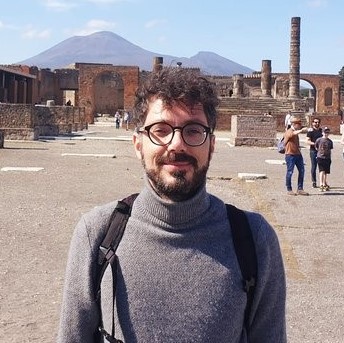I am an Earth scientist by education, an experimental volcanologist, and a materials scientist by profession. I received my PhD from the University of Roma Tre in 2012, focusing on magma degassing. In 2013, I joined Ludwig Maximilians University of Munich until 2016, studying silicate melts and volcanic processes. I worked as a Research Associate at the University of Bristol until 2018, then at Clausthal University of Technology until 2020. I was a Senior Scientist at Bavarian Research Institute of Experimental Geochemistry and Geophysics, University of Bayreuth until 2021. Since 2022, I have been a Senior Scientist at the National Research Council of Italy, and head of the GLASS laboratory; Gateway Laboratory of Amorphous and Structured Solids and melts. I am the Principal Investigator of the ERC Consolidator Grant NANOVOLC (2021). My research focuses on the physicochemical processes in silicate glasses, melts, and magmas, using high-temperature and high-pressure experiments, synchrotron X-ray facilities, and various analytical methods.
Crystallization in natural melts: nanoscale approach to volcanic eruptions and unconventional ways to derive melt viscosity
Understanding the mechanisms of magma fragmentation and the explosive behavior of volcanoes is one of the key challenges in volcanology and eruption forecasting. Central to this is magma viscosity, which significantly influences fragmentation and the likelihood of explosive eruptions. However, recent evidence suggests that the chemical and temperature dependence of magma viscosity is not yet fully understood, impacting the accuracy of numerical models used for probabilistic eruption predictions. Extending insights from glass-ceramics studies, it has been shown that nanocrystal formation can significantly alter magma viscosity measurements. This contribution shares a multipronged analytical and experimental approach using thermal analysis techniques (standard and flash DSC, TMA), Raman and Brillouin spectroscopies, and transmission electron microscopy. These methods enable the derivation of the glass transition temperature and fragility of glass-forming melts prone to nanocrystallization. Additionally, this contribution will highlight the need for further research, particularly on the dependence of melt viscosity on structurally bonded water. We will discuss how a multidisciplinary effort, including in situ observations, can lead to a comprehensive understanding of nanocrystal formation processes. This effort will highlight their impact not only on magma viscosity and volcanic eruptions but also on fundamental studies of glass-forming melts.

Institute of Science, Technology and Sustainability for Ceramics, CNR-ISSMC
Address: Largo S. Leonardo Murialdo, 1, 00146 Rome, Italy
Email: danilo.digenova@cnr.it
